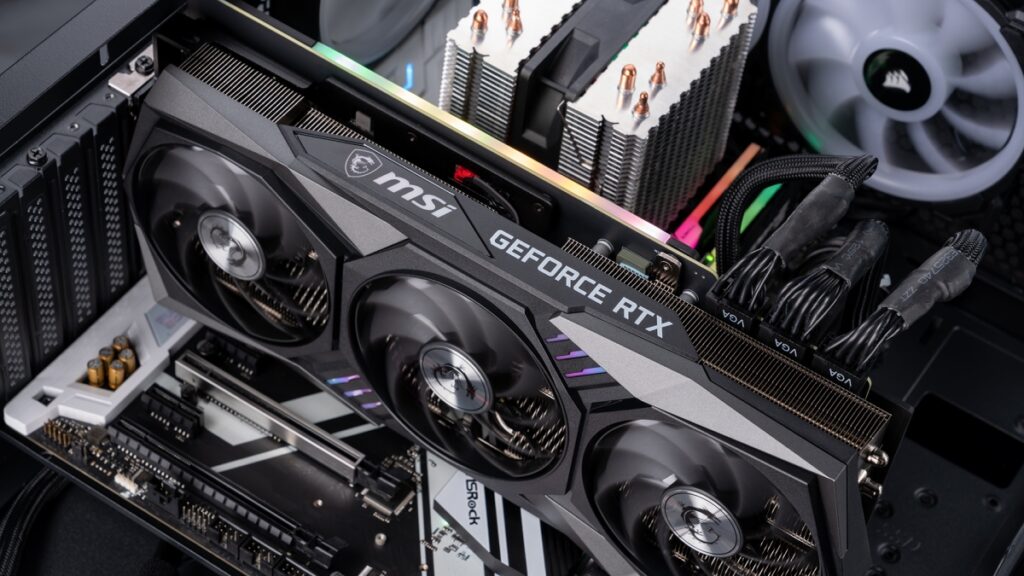When it comes to building your own gaming PC, the graphics processing unit (GPU), which is also known as a graphics card, is an important consideration. Next to the CPU, the graphics card creates a huge impact on your PC’s performance. It consists of another processor taking data from the CPU, translating it into images rendered on the display.
Basically, as you play a game, the graphics does the heavy lifting. And the more powerful it is, the more information would be calculated and displayed quicker, so you have a faster and smoother gaming experience. However, choosing a good graphics card for your gaming PC is easier said than done, as it isn’t just about the brand and price.
Don’t worry, as you can narrow down your choices efficiently, whether you are going for an extravagant PC or getting a budget desktop for gaming. Read on as I show you the things to consider when getting a graphics card for your gaming PC!
1. The Memory Amount
Contents
It’s best to get a graphics card that has at least 6GB, or preferably, more than 8GB if you will be gaming at 1080p. You will require even more memory as you play with settings turned up or when installing texture packs with higher resolution. For even higher resolutions like 4K, then you will want something even higher than 8GB memory.
2. Form Factor
This is very important, as you’ll need more room in your case for the graphics card. Check the measurement of the card, such as its height, length, and thickness. These cards come in different forms, such as half-height (or slim), single or dual-slot, sometimes triple or more slots!
Gaming-focused graphics cards would be at full height, occupying two or more expansion slots. Newer ones are thicker and larger compared to its predecessors. Even if it may take up only two slots on the case, it might have a big fan shroud and/or heatsink, blocking another slot.
3. Thermal Design Power
This measures heat dissipation and would also help you estimate how many watts are needed to run your graphics card when at stock settings.
For instance, if you run a 400-watt power supply unit that has an overclocked 95-watt CPU, then you will want a card that has a 250-watt TDP. If you overclock your PC, then you’ll need a higher PSU and TDP.
4. Power Connectors
Check if your chosen graphics cards have the appropriate number of power connectors. Some cards would have 1 connector, sometimes 2 or 3, with 6 and 8-pin ports on the same graphics card. You’ll need to check your power supply as you consider this factor.
5. The Ports
Some monitors would use HDMI ports, others would have DisplayPort, and older units would only provide DVI ports. Check your monitor and see its ports, ensuring that the graphics card you choose supports it. That way, you won’t need to purchase a new adapter or even a new display!
6. TFLOPS or GFLOPS
TFLOPS is short for Trillions of Floating-Point Operations Per Second. This indicates the max theoretical performance of graphics cards. The core count multiplied by clock speed GHz, then multiplied by 2, will give you the graphics card’s TFLOPS.
This factor will also help you compare the speed of chips, so you’ll know which graphics cards are more suitable for your PC.
7. Other Factors to Consider
Some graphics cards would be manufacturer-overclocked to higher speeds so it would help with the frame rates. That said, the clock speed isn’t as important as the memory speed, and you will want to prioritize the cooling overclock speed.
Just like clock speed, steam processors or CUDA cores will only give a fraction of what one needs to know to know the performance level of graphics cards.
Memory speed or bandwidth is also an important consideration, but not a major priority. That said, faster memory speed would make a graphics card faster than others.
Wrapping It Up
As graphics cards get faster, games would take advantage of that performance, pushing manufacturers to create faster graphics cards to continue that cycle. It is an important element to gaming PCs and can be used in professional applications as well, from video editing to encoding and manufacturing! That’s why it’s crucial to take into, considering the factors that make a great graphics card for your PC build.
I hope that you found insight on this short and informative buying guide on graphics cards for gaming PCs. Take these factors into consideration as you select the right graphics card you need now! Good luck!
Do you have questions or want to share your thoughts and tips on how to choose graphic cards for gaming PCs? Share them in the comments section below, your thoughts are much appreciated.


